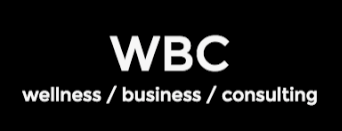I was recently telling a friend about my insomnia: all my desperate attempts to picture beaches, which are always eclipsed by bad memories or work worries. "I'm not a doctor, but there's one obvious diagnosis: stress," she said. Which made me wonder: How do you know if you're stressed? I'd probably been so stressed for so long, I realized, I couldn't identify it. I had nothing to compare it to.
"Stress is a heightened state of activity and engagement," naturopathic doctor Dr. Gabrielle Francis tells Bustle. "There are both good and bad types of stress. When negative stress continues for long periods of time, there can be wear and tear on your nervous system and endocrine system that impacts the entire body and your health. Some of the symptoms associated with prolonged and unrelenting stress are anxiety, depression, fatigue, muscle tension, headaches, digestive problems, insomnia, and interpersonal issues with friends, family, and work."
Since stress can manifest in so many different ways, it's not always obvious when we're under it. Sometimes, we get so caught up in our busy lives, we don't even stop to think about our mental health. Here are some signs you're more stressed than you realize.
1 You Have Insomnia, Especially Due To Racing Thoughts
My friend might not be a doctor, but she did identify that symptom correctly. "If you’ve never suffered from insomnia before, then this is a telltale sign that you are stressed out," Weena Cullins, Licensed Clinical Marriage and Family Therapist, tells Bustle. "Stress can keep you up at night by disabling your ability to quiet your mind and get restful sleep."
2 You're Having Nightmares
Issues you're not addressing when you're awake can come out when you're sleeping. "It’s not abnormal to have disturbing dreams when you’re super stressed," says Cullins. "These dreams can serve as a subconscious warning that you are worried about someone or something, overwhelmed, or even feeling lost."
3 You're Being Ditzy
If you're forgetting things or making careless mistakes all the time, that doesn't actually mean you're a ditz — it could mean you're stressed. After all, there's only so much we can fit in our minds at once. "When stress consumes our thoughts it doesn’t leave much mental bandwidth for anything else," says Cullins.
4 You Have Mysterious Aches & Pains
Headaches and body aches can of course have physical causes, but if they're always there for no apparent physical reason, the source could actually be stress-induced tension, says Cullins. Since stress people often can't find the time to address these problems, they often just suffer through it or use painkillers, which makes the issue persist.
Headaches when you wake up in particular could reflect a habit of grinding your jaw in your sleep, Rachel Beider, Licensed Massage Therapist and owner of Massage Williamsburg, tells Bustle. Shoulder and neck pain are also common signs of stress because anxiety can cause you to tense your shoulders.
5 Your Eating Habits Have Changed
When we don't address stress directly, we might comfort ourselves through emotional eating, says Cullins. Or, we might lose our appetites. Either way, drastic changes in eating habits are a warning sign.
6 You're Seeing The Negative In Everything
Typically, if something potentially upsetting happens, you can comfort or reassure yourself. If somebody says something negative about you, for example, you can tell yourself they're wrong. If you have an irrational worry, you can remind yourself it's irrational. But stress prevents you from thinking clearly enough to do this, NYC-based therapist Kimberly Hershenson, LMSW tells Bustle. Your thoughts are just racing and you can't keep up, so the negativity spirals. Instead of diving into this hole to rescue yourself, Hershenson recommends addressing these thoughts indirectly by reflecting on or even writing down things you're grateful for.
7 You're Being A Control Freak
To regain a sense of safety in a stressful situation, you'll grasp for control over anything and everything within your power, says Hershenson. You might become more protective of your living space or schedule, get obsessive about your spending, eating, exercise, or work habits, or even try to control the people around you. If you find yourself in this situation, Hershenson recommends accepting what you can't control and focusing on the things within your control that actually matter.
Fortunately, there are tons of ways to curb stress, says Francis, including eating healthy, exercise (especially yoga), massages, and talking it out with a friend or therapist. Making time in your schedule to curb stress may be the last thing you want to do when you're stressed out, but it'll save you time in the long run.










